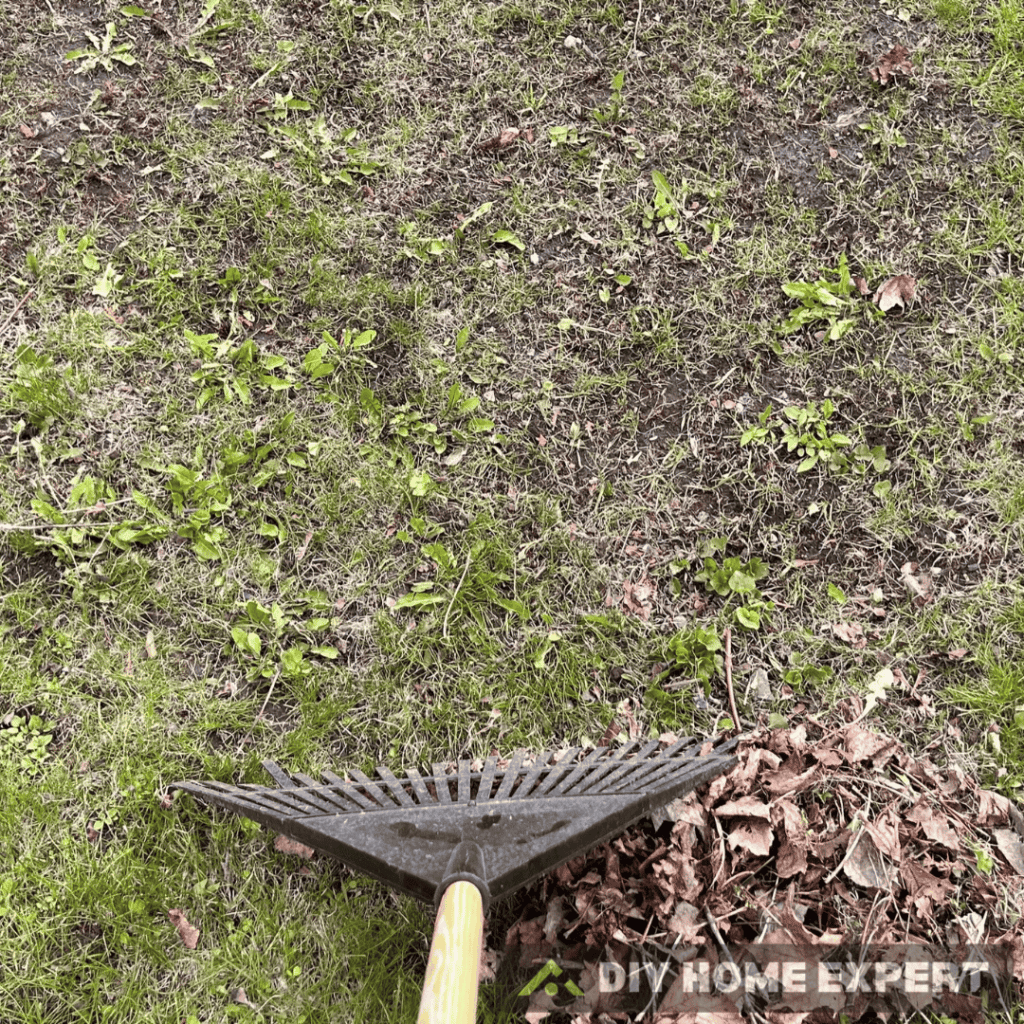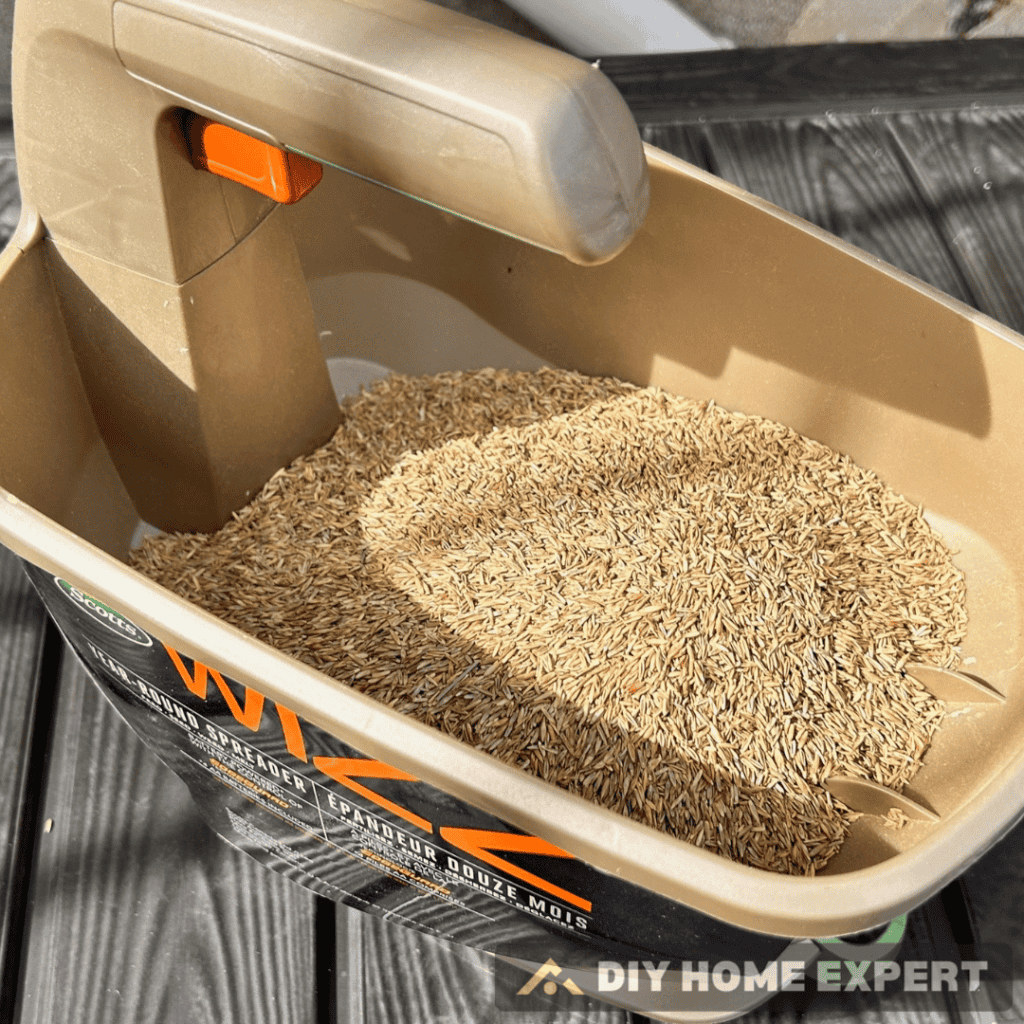Spring Lawn Maintenance Tips | The Best Way to Fix Your Lawn
Use our expert spring lawn maintenance tips to get your lawn looking its best.
Welcome to spring! As the cold weather fades, it’s the perfect time to get your lawn ready for the year. If you’ve always wanted a green, lush lawn but didn’t know how to achieve it, you’re in the right place.
I learned everything I know about lawn care from my dad, who always had the greenest, healthiest lawn in our neighborhood. He taught me how to take care of it naturally, without using harmful chemicals, so it’s safe for kids to play on.
In this guide, I’ll share simple and effective tips for spring lawn care. From the right way to rake to the best watering techniques, I’ll help you make your lawn vibrant and healthy. Let’s get started and turn your lawn into the envy of the neighborhood!
Spring Lawn Maintenance Tips
This post may contain affiliate links, meaning I make a commission if you purchase through my links, at no extra cost to you. Disclosure here
1. Rake the Yard

Spring is a critical time for your lawn. After the winter thaw, wait until your lawn dries before stepping on it. This helps avoid damage to the still-soft grass.
Once your lawn is dry, it’s time to start raking. Raking helps remove clumps of dead grass and other debris that accumulated over the winter. This debris, known as thatch, can prevent water and air from reaching the soil, which your grass needs to grow healthy and strong.
For your first raking of the season, use a spring-tine rake. This type of rake is gentle on your lawn and effective at removing thatch without damaging the grass. Make sure the ground is not muddy when you rake; otherwise, you might pull out healthy grass along with the thatch.
Clearing out thatch early in the season helps prevent lawn diseases and prepares your yard for a year of healthy growth.
Pro Tips | When to Start Lawn Work
Observe City Workers: If you’re unsure about the best time to start working on your lawn, a good indicator is to watch when city workers begin maintaining parks and public green spaces. Their activity typically aligns with optimal growing conditions in your area, making it a reliable signal for homeowners to start their lawn care efforts.
2. Aerate the Soil

Aerating your lawn is like giving it a deep breath of fresh air. It’s a vital step in spring lawn care because it helps break up compacted soil, allowing air, water, and nutrients to reach the roots of your grass more easily.
Here’s why aeration is important:
- Relieves compaction: Over time, soil gets packed down, especially in high-traffic areas. Aeration loosens it up.
- Enhances root growth: With more room to grow, your grass roots can dig deeper, making your lawn healthier and more robust.
- Improves water intake: Loosened soil absorbs water better, reducing runoff and helping your grass stay hydrated.
For the best results, use a core aerator that removes small plugs of soil from your lawn. This type of aeration is particularly effective because it doesn’t just poke holes in the ground—it actually removes bits of soil, creating more space for air and water to circulate.
Here’s when and how to aerate:
- Timing: For cool-season grasses, aerate in early spring or fall. For warm-season grasses, late spring through summer is ideal.
- Method: You can rent a core aerator from most garden centers or hire a professional lawn care service. The DIY route can be a fun weekend project if you’re up for a bit of exercise!
Aerating your lawn every two or three years is enough to keep it healthy, but high-traffic areas or lawns with clay soil might need it annually.
3. Choose the Right Seed

Selecting the correct type of grass seed is crucial for maintaining a vibrant lawn throughout the year. Here’s how to make the best choice for your lawn’s specific needs:
Selecting Grass Types
- Climate Suitability: Choose a grass type that thrives in your local climate. For example, in cooler Canadian climates, you might opt for fescue or bluegrass, which are both resistant to cold and can handle the variable weather.
- Understanding Seed Labels: When buying grass seed, look closely at the labels. They provide important information about germination rates and the mixture of seed types. A higher germination rate means more of the seeds will sprout, leading to a denser lawn.

Seeding Techniques
- Preparing the Lawn: Before seeding, ensure your lawn is ready. Remove any dead grass, loosen the soil, and level out any uneven spots. This prep work helps the seeds make good contact with the soil, which is essential for germination.
- Sowing Methods: Use a spreader for even seed distribution. You can choose between a drop spreader, which is great for precise application, or a broadcast spreader, which covers large areas more quickly.
- Post-Seeding Care: After sowing, lightly rake the seeds into the soil and water gently but consistently. Keeping the seeds moist until they germinate is key to successful lawn growth.

PRO TIPS | SEED LIKE A PRO
Double Seeding Technique: After initially spreading the seeds, I like to spray them lightly with water, add a thin layer of soil, and then apply another layer of seeds on top. This method helps protect the seeds from birds and improves their contact with the soil, enhancing germination.
Be Generous with Seeds: Don’t be shy with your seed application. I tend to use more seeds than recommended because some will inevitably be lost to birds. Being generous ensures that enough seeds survive and sprout, leading to a fuller and lusher lawn.
With the right preparation and choice of seed, your lawn can become a lush, inviting green space that enhances your home’s curb appeal.
4. Apply a Thin Layer of Soil

Topdressing your lawn with a thin layer of soil is like giving it a multivitamin. It’s an excellent way to improve the overall health and appearance of your grass. Here’s why and how you should consider topdressing your lawn this spring:
Benefits of Topdressing
- Enhances Soil Quality: Adding a layer of quality soil improves the existing soil structure, which can be degraded by weather and wear. This improvement helps your lawn absorb more nutrients and water.
- Levels the Lawn Surface: Over time, lawns can develop uneven areas. Topdressing helps to level out these dips and bumps, giving you a smoother lawn.
- Supports Seed Germination: If you’re seeding new grass, topdressing can protect the seeds and provide them with the nutrients they need to germinate and grow strong.
Topdressing Best Practices
- Choosing the Right Soil Mix: Use a mix that matches your lawn’s current soil to avoid disrupting its balance. Typically, a mixture of sand, loam, and peat is used.
- Application Techniques: Spread the soil evenly across your lawn using a shovel and rake. Aim for a layer about 1/4 inch thick. Too much soil can smother your grass.
- Timing and Frequency: The best time for topdressing is in the spring or early fall. Doing this every couple of years is sufficient, but if your lawn is particularly patchy or uneven, you might consider doing it annually.
Topdressing is a straightforward way to give your lawn a boost and enhance its growth and health for the coming months.
5. water your lawn
Proper watering is critical to maintaining a healthy, resilient lawn. Here’s what you need to know to water your lawn the right way:
Importance of Consistent Watering
- Regular Schedule: Grass needs a consistent amount of water to stay green and healthy. Setting a routine helps avoid the stress that can come from too much or too little water.
- Water Requirements: Most lawns need about an inch of water per week, whether from rainfall or your watering efforts. This helps ensure the grass roots grow deep and strong.
Best Times to Water
- Early Morning Watering: The best time to water your lawn is early in the morning, before 10 a.m. This timing helps reduce evaporation and ensures that the water soaks deeply into the soil.
- Avoid Evening Watering: Watering in the evening can leave the grass damp overnight, which increases the risk of fungal diseases.
Advanced Watering Tips
- Eco-Friendly Practices: Consider using rain barrels to collect rainwater for your lawn. This not only saves on your water bill but is also better for the environment.
- Adjusting Based on Weather: Always adjust your watering based on current weather conditions. Cut back during cool, rainy periods and increase watering during hot, dry spells.
- Recognizing Signs of Watering Issues: It’s important to watch for signs of overwatering or underwatering. If the grass doesn’t spring back quickly when stepped on, it might need more water. Conversely, soggy spots or fungal growth could indicate too much water.
By following these watering fundamentals, you can help your lawn thrive throughout the growing season, making it more robust against pests and diseases.
6. Mowing and Lawn Care Tips
Proper mowing and ongoing lawn care are essential for maintaining a healthy, attractive lawn. Here are some best practices to ensure your lawn stays in top condition:
Mowing Best Practices
- Ideal Mowing Height: During spring, it’s important to set your mower to the right height. For most grass types, keeping the blades 2.5 to 3 inches tall helps protect the roots from sun damage and promotes a healthier lawn.
- Sharp Mower Blades: Always use sharp blades to ensure a clean cut. Dull blades can tear the grass, leading to stress and disease.
- Mowing Patterns: Vary your mowing pattern each time to prevent the grass from always bending in the same direction, which helps avoid ruts and promotes even growth.
Comprehensive Lawn Care
- Fertilizing: Apply fertilizer in the spring to provide necessary nutrients. Use a slow-release formula to feed your grass gradually and reduce the risk of burn.
- Weed Control: Early identification and treatment of common weeds are crucial. Use natural weed control methods where possible, especially if you prefer keeping your lawn chemical-free.
- Pest Management: Implement natural pest control strategies to keep your lawn healthy without the use of harsh chemicals. Encourage beneficial insects and use organic treatments if pests become a problem.
By adhering to these mowing and lawn care tips, you can ensure your lawn not only looks great but is also sustainable and environmentally friendly.
What’s Next?
We hope you loved these spring lawn maintenance tips. For more great lawn care advice and visual inspiration, be sure to follow us on Pinterest.
Learn How To Replace An Outdoor Light Fixture
Find out How To Install Basement Ceiling Insulation
Check How To Change A Light Switch In 5 Steps
Our guide offers spring lawn maintenance tips so you can keep your yard lush and chemical-free, creating a safe play space for your kids!






